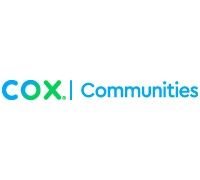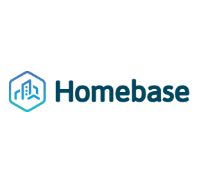By Adam Nightingale, VP Sales EMEA, Accedo
Consumers are finding and viewing content on a wider variety of devices than ever before. With a constant flow – actually, it’s more of an avalanche - of new devices entering the market, at Accedo we expect to see even more fragmentation in an already chaotic ecosystem. The key to a successful strategy will centre around engaging the consumer effectively and introducing services which are truly consumer-centric.
Device Complexity
There are a number of fundamental challenges with the apparently relentless influx of devices. Not least of all is the need to provide an elegant and intuitive cross-device user experience, one that focuses on the needs of the consumer as well as catering to the specific characteristics of the device. This is not a one-size-fits-all market. Whilst we are witnessing great enthusiasm for connected everything – from door-locks to TVs to thermostats to cars and fridges – in parallel it is essential that we achieve a user experience that is truly consumer centric, using each device for what it’s good at.
Currently we are seeing numerous attempts at controlling of one device using another, such as using a smart-phone as a TV EPG, content discovery platform and remote control. This is without doubt an attractive use case but the challenge is in exposing cross-device capabilities and ensuring seamless interoperability between devices from multiple vendors.
Consumers have multiple devices and at the moment each one interacts with entertainment platforms on a 1:1 basis, often fulfilling a slightly different need in a user’s life. The responsibility and challenge that we all have is to get better at building ecosystems of connected devices and making the user experience logical and intuitive. As a consumer, if I have an entitlement to access content on my iPhone then as a consumer I want those same entitlements to be mirrored on my Connected TV, my PC, my Android tablet or even via my Google glasses. So the challenge spans not just elegant user-experiences and technology but also in to the murky world of content licensing and distribution.
Solution Seeks Problem
Over the coming year we will see substantial growth in the market for wearable devices. As well as creating yet more challenges for the cross-device user experience mentioned above, the trend for wearable devices is likely to lead to a period of turbulence and sub-optimal or poor quality consumer services tied in with those devices. In an attempt to drive sales and usage of those platforms we will see many solutions looking for an actual problem to solve (Bluetooth gloves, anyone..?). The challenge will be working out the most compelling function for this new generation of devices. Currently the killer app for wearables is probably fitness and exercise apps. Perhaps the killer app for a smart watch is a time app. As with smart phones and the high growth in apps, enthusiastic early adopters will drive a big wave of innovation where we can expect to see some very innovative consumer services and functions for wearables. Google Glass will be a great example. By changing the way in which users interact with the Internet and access information so the manner in which information is communicated to them will change.
All Content on All Devices all the Time
We’re at the start of a long journey, where the end result will be the availability of all entertainment on all devices. I firmly believe that consumers will expect this. Consumers also expect and accept the need to have multiple suppliers and multiple subscriptions to get to the full range of content they want to see. We’re already seeing the first steps on this journey where consumers may have several OTT subscriptions with partly overlapping and partly unique content. I’m sure the content industry will continue to evolve and take a broader view of its addressable devices, but it will take years before OTT is important enough for the content industry to consider having all content available on all devices. I wish I could credibly say that this is the next step for the industry but I think there are a couple of important steps before we reach the end goal.
Where Next?
From an Accedo perspective, the most important next step is what we call “service discovery”. As mentioned, the OTT environment is increasingly fragmented with a number of content providers, service providers and publishers offering attractive content on a number of devices. However, the amount of marketing required to make consumers aware of the services is immense. Devices are cumbersome to navigate and it’s difficult to find new services – it’s like looking for a needle in a haystack. Device manufactures are trying to bring “cross-service content discovery” to the market, but we at Accedo think they’re missing the first step, which is for consumers to discover the services themselves. Once found, registration and subscription processes are cumbersome, and the user take-up of new attractive services is a fraction of what it could be. The improvement of this UX is the most important next step to get traction and growth in the industry.
Shaping Up
The market is still quite young and most consumers in the world have not yet had the luxury to get a taste of any content, any time, anywhere. Once they do then things will take off even faster, and we will see competition from OTT providers force the “traditional” PayTV platforms to follow their lead and shape up, and the key to success will remain effectively engaging the consumer with a compelling offering.
Next: 11% of Spanish Homes with Broadband Already have a Control System for Smart Homes
Previous: Connected CE, Entertainment, and OTT Analyst Profile: Brett Sappington















